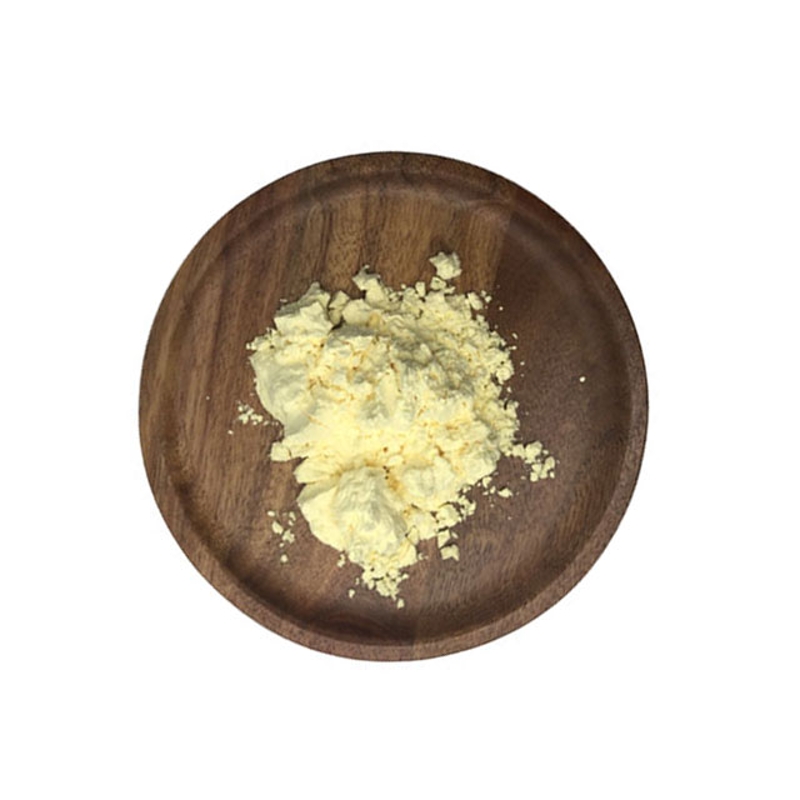Wound healing itch treatment is expected, Immunity posted that IL-31 is the culprit!
-
Last Update: 2020-07-28
-
Source: Internet
-
Author: User
Search more information of high quality chemicals, good prices and reliable suppliers, visit
www.echemi.com
Skin wound healing is often accompanied by local itching.larger wounds, such as burns, are not only more difficult to heal, but also more itchy.it is believed that most people have experienced the itching in the later stage of wound healing. How does this kind of discomfort happen? Can it be controlled by medical means? On July 15, 2020, immunity published online a new research result of Chen Wanjun's team of National Institutes of health.we found that TGF - β can induce dermal dendritic cells to express IL-31, thus activating sensory neurons and producing pruritus.Image Source: immune skin wound healing is a highly coordinated, orderly and dynamic inflammatory process involving a variety of growth factors and cytokines.however, in the process of wound healing, the main factors leading to pruritus and the basic mechanism of immune regulation pruritus are still elusive.the researchers investigated some postoperative patients and conducted video study on wound healing model mice, and determined that the peak of itching reaction in wound healing was 5 days after skin injury.after that, RNA SEQ, qPCR and ELISA were used to detect the expression of IL-31 in wound skin of model mice, which indicated that the expression of IL-31 was increased at the peak of pruritus.to clarify the role of IL-31 in the itching response, the researchers constructed IL-31 knockout mice.compared with wild-type mice, there was no significant increase in scratch injury, that is to say, the wound itching of IL-31 knockout mice was lighter.Image Source: immunity researchers further explored the mechanism of IL-31 induced itching.they found that the expression of il31ra, TRPV1 (capsaicin receptor) and NPPB were regulated during the healing of sensory neurons, while the expression of TRPA1 did not change significantly.however, in vitro, IL-31 treatment for 24 hours could enhance capsaicin (50 nm) - stimulated calcium influx in DRG neurons.in addition, IL-31 also induced STAT3 phosphorylation.researchers injected IL-31 into mut-stat3 wound healing model mice and found that there was no significant increase in scratch injury. These results suggest that IL-31 can increase the expression of key signal transduction molecules in sensory neurons and increase nerve sensitivity.Image Source: immunity next, the researchers revealed the source of IL-31 in wound healing.by sorting the immune cells in the wound skin and detecting the expression of IL-31, the researchers found that T cells or B cells were not the main source of IL-31 in wound skin, while the expression of IL-31 in dendritic cells (DC) was the highest. further verification showed that the number of CD11c cells in wound skin was higher than that in normal skin. moreover, compared with wild-type mice, the scratch injury of CDC depleted mice did not increase significantly. Image Source: immunity, which factors promote the increase of IL-31 expression in wound skin? It is reported that cytokines IL-1 β, IL-6, IL-17A, transforming growth factor beta 1 (TGF - β 1) and tumor necrosis factor - α (TNF - α) are important participants in coordinating wound repair. therefore, the effect of these cytokines on inducing IL-31 expression in skin cdc2 in vitro was tested. unexpectedly, only TGF - β 1 significantly increased il31 expression in normal skin. in addition, IL-31 production and scratch injury were significantly reduced in TGF - β receptor 1 (TGFBR1) knockout mice and Smad3 − / − mice, suggesting that TGF - β induces IL-31 elevation in skin cdc2. Image Source: immunity in this study, researchers found that in the process of skin wound healing, cdc2s enhanced the sensitivity of sensory neurons through the TGF - β - IL-31 axis, leading to the occurrence of wound itching. Image Source: immunity IL-31 may increase sensory neuron activity by up regulating the expression of molecules involved in signal reception (il31ra), signal transduction (TRPV1) and signal transmission (NPPB). these molecular expressions are associated with STAT3, suggesting that STAT3 may be a potential therapeutic target for IL-31 dependent pruritus. end reference: [1] the cytokine TGF - β induce interleukin-31 expression from German dental cells to activate sensory nerves and stimulate Wong itching
This article is an English version of an article which is originally in the Chinese language on echemi.com and is provided for information purposes only.
This website makes no representation or warranty of any kind, either expressed or implied, as to the accuracy, completeness ownership or reliability of
the article or any translations thereof. If you have any concerns or complaints relating to the article, please send an email, providing a detailed
description of the concern or complaint, to
service@echemi.com. A staff member will contact you within 5 working days. Once verified, infringing content
will be removed immediately.







